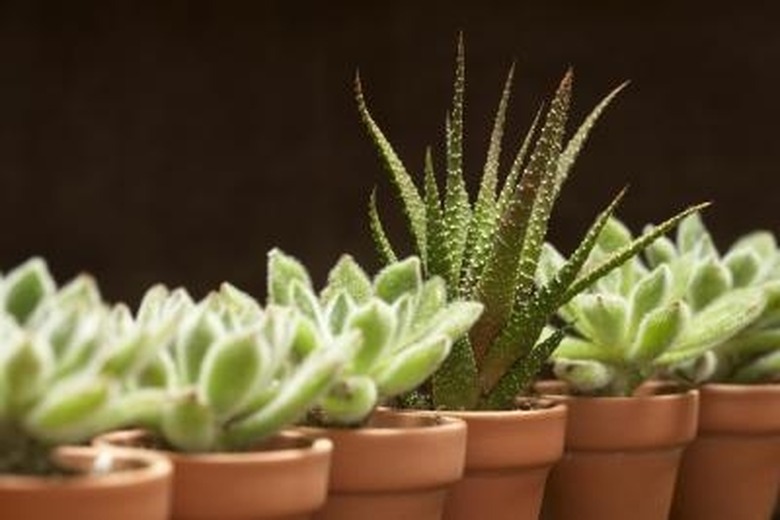How To Fix A Wilting Cactus
We may receive a commission on purchases made from links.
Cactus plants (Cactaceae plant family) can be pretty low-maintenance, but because of this, you may often forget that they still need to be looked after just like any other plant. If your once-happy cactus has now started to wilt and it's disease-free, all you need is a bit of water to fix the wilting cactus, and it will perk up again. If it's infected with root or crown rot, symptoms of overwatering, the fungal disease likely can't be cured. Keeping your cactus on a watering schedule that is appropriate for the temperatures and the season will save your plant in the long run.
Fixing a Wilting Cactus
Fixing a Wilting Cactus
If your cactus houseplant is looking wilted, this means you need to water it immediately. Although you want to make sure that the soil dries out between waterings, your cactus needs to get enough water to survive. There's a fine line when watering a cactus, though, and if you overwater your cactus, that is a surefire way to kill it. Pests can cause root rot, but cactus plants typically get root rot due to overwatering.
Cactus Watering Schedule
Cactus Watering Schedule
When caring for a cactus, you must keep it on a watering schedule based on the temperatures and the season. It would be best to water indoor cactus plants once a week or once every two weeks in the spring and summer months. You'll be able to gauge if your cactus needs water once a week or every two weeks by how the cactus looks and whether the soil is completely dried out. The only exception is if you're living in a climate where the temperature reaches over 90 degrees.
When temperatures are super high, cactus plants will go dormant and live off their stored water, which means that you can water your cactus every two weeks. In the fall and winter months, you can water your cactus every three to four weeks. Although this is a typical schedule that you can follow, getting to know your cactus's habits will help it thrive in the long run. When the soil is completely dry or your cactus is wilting, you should water it. Always remember, though, that if the soil is still wet, you should leave your cactus alone.
Additional Cactus Care Tips
Additional Cactus Care Tips
Since most cactus plants come from dry, desert climates, they love to be in bright, sunny locations. Although many of us have one view of what a cactus plant looks like, cactus plants can come in many different shapes, colors and sizes. Many will even bloom if they get a lot of light.
Although cactus plants like sunlight, you want to make sure that they don't burn. If your indoor cactus starts to turn yellow or brown on the side facing the sun, move it for a bit because it's burning.
Cactus houseplants tend to be slow growers, so you don't need to use a lot of fertilizer to maximize their growth. Since they're slow growers, you won't have to worry about pruning your cactus plant. If you want to give your cactus fertilizer so it can get extra nutrients, fertilize it with a succulent fertilizer in the spring and summer. You only have to give it small doses of fertilizer, and when the colder months come around, you can stop using the fertilizer until the following spring and summer.
